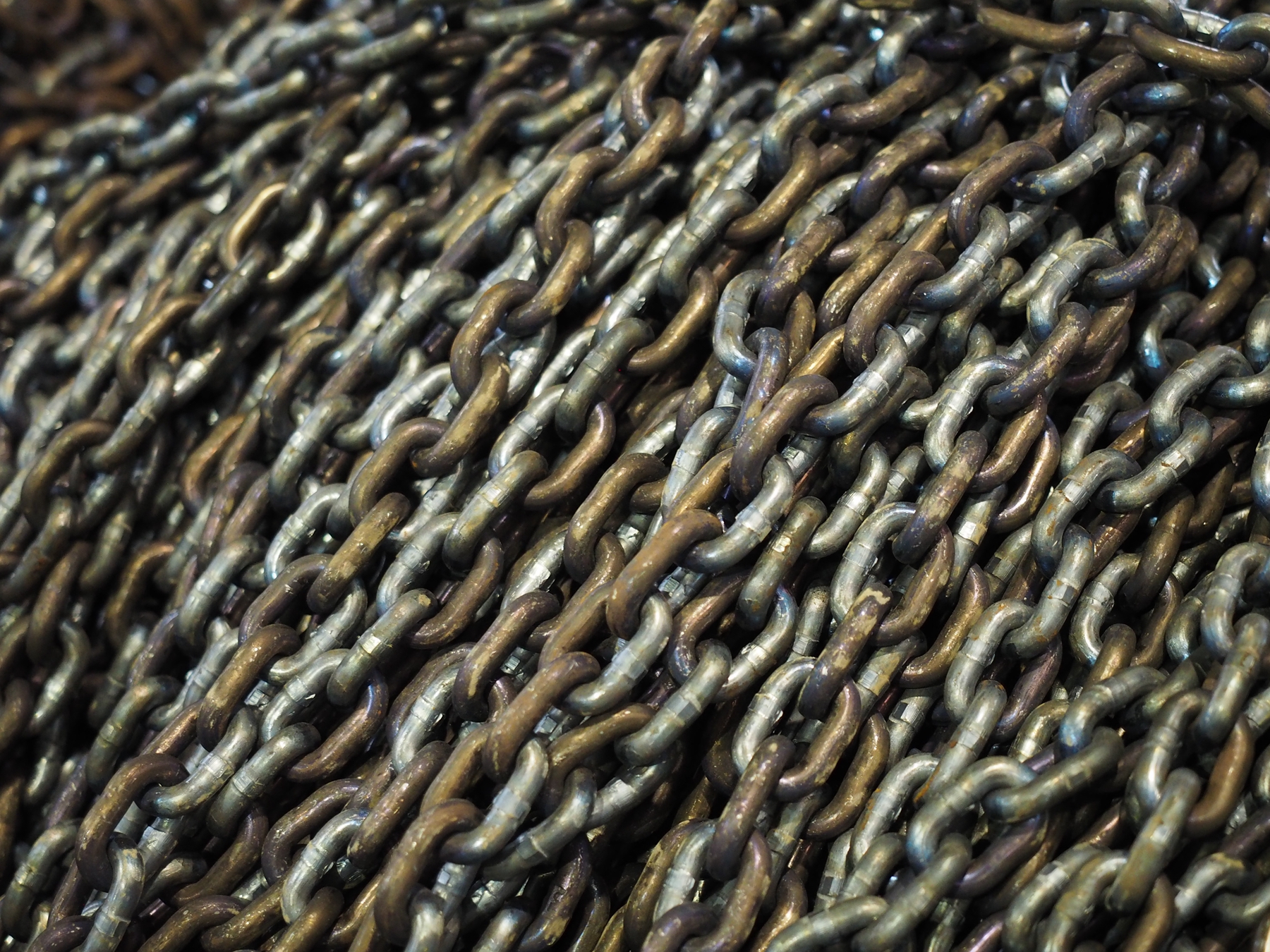By H-Lift | 21 February 2024 | 0 Comments
What is the Difference between Hoist Chain and Sling Chain ?

The terms "hoist chain" and "sling chain" refer to different components used in lifting and material handling, and they serve distinct purposes. Let's break down the key differences:
Hoist Chain:
- Function: A hoist chain is an essential part of a hoisting system, designed specifically for use with hoisting equipment such as chain hoists, electric hoists, or other lifting devices.
- Construction: Hoist chains are required to flawlessly fit into the hoist sprocket drive wheel pockets and are engineered to meet much tighter dimensional tolerances than Sling Chains. They are also surface hardened to withstand continuous link-to-link abrasion demands when transferring lifting forces by running over sprocket wheels. They are often made of alloy steel and need to be made by precision manufacturing procedures to ensure reliability during lifting operations.
- Features: Hoist chains may have load hooks, attachments, or other components that make them compatible with the specific design of the hoisting equipment. They are optimized for controlled lifting and lowering of loads, but should not be used like a lifting chain, e.g. choking the hoist hook back to the hoist chain.
- Applications: Commonly used in manufacturing, construction, and various industries where precise lifting and positioning of heavy loads are necessary.
Sling Chain:
- Function: A sling chain is part of a lifting sling assembly, which may include other components like hooks, links, or end fittings. The sling chain itself contributes to forming a flexible and adaptable lifting system.
- Construction: Sling chains are also made of strong materials, often alloy steel. They are designed to be flexible and capable of adapting to different load shapes and sizes. The construction allows for the creation of various types of lifting slings, such as chain slings or wire rope slings.
- Features: Sling chains typically have end fittings or attachments at each end, enabling them to connect to the load or the lifting device. They are versatile and can be configured for different lifting applications. Chain slings are much more resistant against kinks, crushing and other mechanical damages than any other sling type. Due to their flexibility, they can be stored in much smaller spaces (like buckets or small containers) as compared to wire rope slings. Also, chain slings are the only sling type that can infinitely be length adjusted ‘link-by-link’ by so called ‘grab hooks’ to adjust to off-balanced- or uneven loads.
- Applications: Widely used in industries like shipping, construction, and manufacturing, where lifting and rigging operations involve a variety of loads.
In summary, the primary difference lies in their intended use and application. Hoist chains are integral components of hoisting equipment, optimized for controlled lifting and lowering, while sling chains are part of a larger lifting sling system designed for flexibility and adaptability in handling various types of loads.
Leave a Reply
Your email address will not be published.Required fields are marked. *